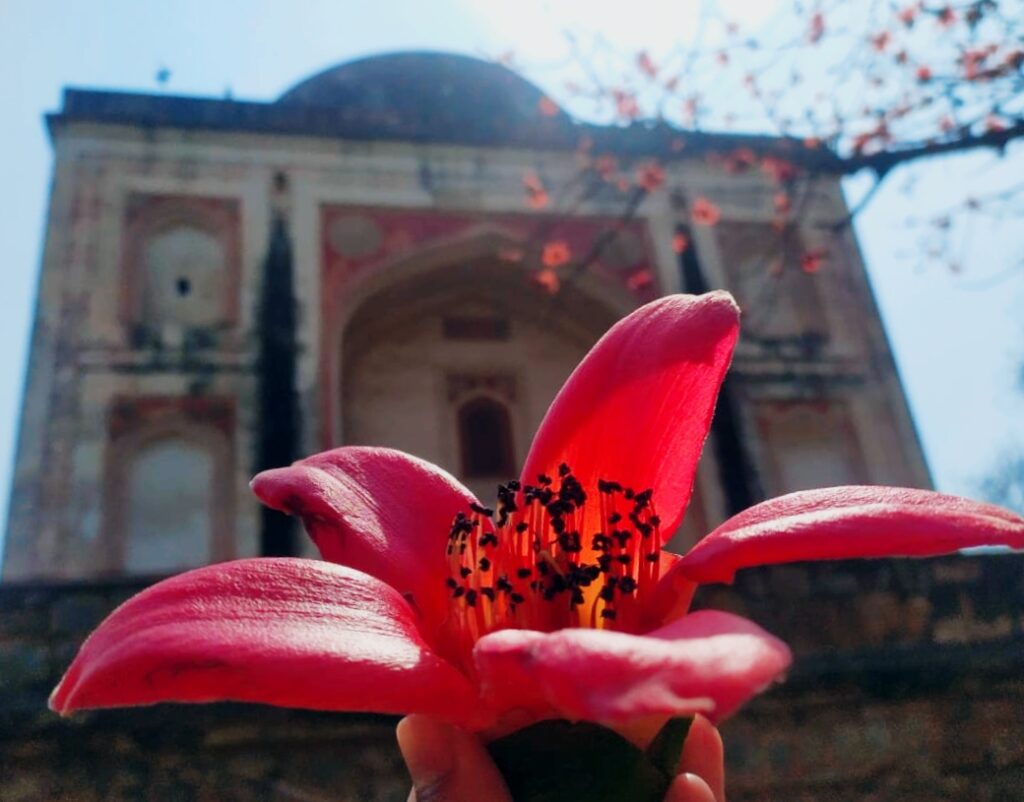As spring arrives in Delhi, a tall tree with a thorny bark sheds all its leaves and bursts dramatically into bright red flowers with orange and other variants here and there. These giant red colored trees seem to be embracing the city of Delhi through the months of spring.

They attract all forms of life in the capital city: many birds and animals frequent their visits to the Silk Cotton, and humans too can often be found distracted during a walk or a drive through the city, gaping at the magnificence of Semals with wide eyes and necks stretched upwards. Birds perch on the leafless branches and sing merrily the songs of spring, butterflies hover over the scarlet flowers as they dance in Delhi’s cool spring breeze and eventually shed one by one, making carpets of red across the city.

Known by various names such as the Silk Cotton, Cotton tree, Malabar Silk cotton, Shalmali, Bombax etc, Semal has a silvery bark with the lower sections covered with conical prickles perhaps to deter animals from attacking. Its wood is too soft to be very useful, the plant, however, does have medicinal value.

In Ayurveda, for instance, Semal flower herb is used in treatment of asthma, diarrhoea, wounds, leucorrhoea, anemia, seminal disorders and skin problems. According to Pradip Krishengummy, an environmentalist, a substance collected from the stem is said to be an aphrodisiac and also used to treat stomach disorders as well. Its flower buds are also used as a spice in South Indian Cuisine.
The blossoming of the tree has become a testimony to spring for Delhiwalas over the years.




